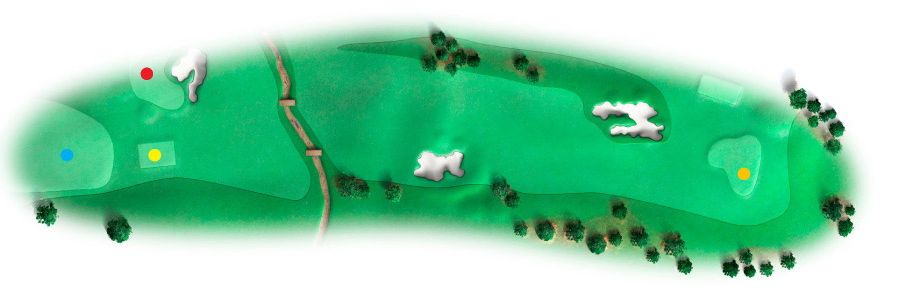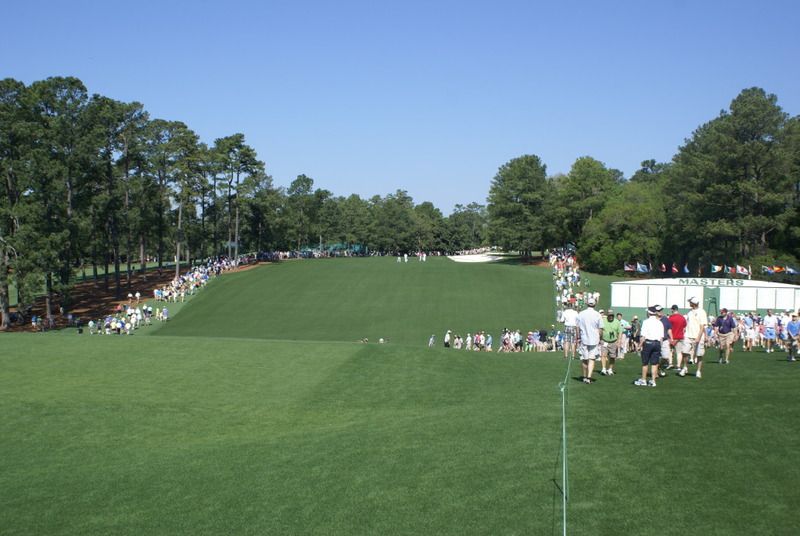With the Masters just about a month away, and talk on this board already turning to the annual updates to the course, I wanted to start a thread that went through the changes to each hole from 1934 to today. I'll start things off on a hole by describing the changes, and would like to hear others thoughts on how the strategy of the holes has changed (or not), if the changes have made it a better hole, etc. If anyone has any pictures to add (whether old or new) this would be a great place to do so.
All of the descriptions I am including are paraphrased from the Golf Digest write-up of the changes over time, which has a great set of images of how the holes have changed and can be found here: http://www.golfdigest.com/golf-courses/georgia/augusta-changes. Please add any additional changes that you are aware of that did not make it into the GD descriptions.
There a few general themes to think about during this process, including the intentions of changes requested by Clifford Roberts, changes made to accommodate spectator viewing, changes made to address increased length and certain changes that were made to recapture features of the course that had gone by the wayside (look for Byron Nelson as a GCA later in the thread).
Hole 1 - Tea Olive - Par 4


1934 - 400 yards - Originally the 10th, players hit drives over a low valley formed by a dry creek bed to an uphill slope guarded by a splashy bunker on the right. Another fancy bunker existed left and far short of the perched green.
1955 - 400 yards - RTJ filled in the old short-left bunker and added one on the left edge of the green. The ditch, wet only when it rained, was piped underground. Poa annua in the Bermuda greens was burned away with a chemical spray.
1983 - 400 yards - Tee shifted to the right in 1972 to accommodate spectator flow. Mature pines planted in the left-hand rough to tighten drives. The green was rebuilt to grow bent grass and a front lobe was added. For the 1983 Masters, the tee was moved back 15 yards, but players weren't told. Instead the club officials said the bunker had been moved 15 yards. The scorecard yardage wasn't changed to 410 yards until 1999.
2002 - 435 yards - Green rebuilt in 1996. A second cut of rough was added for the 1999 Masters, tightening the hole. in 2002, Fazio moved the tee back 25 yards and rebuilt the fairway bunker 15 yards closer to the green (requiring a 300 yard carry). The fairway was regraded to give short hitters a level lie.
2006 - 455 yards - Fazio moved the tee back another 20 yards (327 drive required to clear the bunker). Fairway bunker was deepened and a new thumb of turf was extended into it.
2011 - 445 yards - Back of tee shortened to ease gallery flow. In 2008, the green was rebuilt to install a heating and cooling system.
Hole No. 1 - Tea Olive Par 4 1933: 400 yards 2009: 455 yards
Dan's take:
"Augusta’s famed opening par 4 – site of so many ceremonial tee shots by Jock Hutchison, Fred McLeod, Byron Nelson and Sam Snead – has undergone its fair share of alteration over the decades, though an argument can be made that at least in terms of playing angles, it still approximates Jones & MacKenzie’s strategic concept to a reasonable degree. Initially featuring the first of an original eight bunkerless greens, the opener was designed to encourage a run-up approach, though the precise configuration of the elevated putting surface (which included a protruding front-left section) made such a play considerably easier from the right side of the fairway. The most prominent single alteration was the replacement of this extended section of green with a bunker in 1951, which has limited the great majority of approaches (and certainly any played from the left two-thirds of the fairway) to the aerial route ever since. Of course, this hazard also served – at least cosmetically – to enhance the right third of the fairway’s “optimum” status, which in turn placed a greater emphasis on the large right-side fairway bunker, an invasive hazard which has existed since 1933, but which has been moved and/or expanded multiple times since World War II.
An additional change has substantially altered the holes aesthetics but done little to affect the play of the competent ball-striker: the removal of a large, impressively shaped MacKenzie bunker that sat just off the fairways left edge, some 50 yards shy of the green. Were it still in existence, this hazard would surely draw parallels to the huge, wildly shaped bunker that sits in a similar no-mans land along the 10th fairway though as we shall soon see, that bunker initially served rather a different purpose. Number one’s deceased hazard, in contrast, could never have factored very much into play for all but the weakest of golfers.
That the hole has been lengthened some 55 yards (by extending the tee backwards, onto land originally occupied by the putting green) represents at best a push in the courses battle to defend itself against modern equipment, though the deeper tees have certainly helped maintain the fairway bunkers continuing relevance in this era of unchecked technology.
Better Then or Now?
A fairly strong argument can be made that for all classes of players, the exchange of the old no-mans-land fairway bunker for the greenside hazard was a good one. True, Jones and MacKenzie’s favored run-up approach shot largely disappeared, but the move injected number one with a new strategic component, truly making the right fairway bunker the focal point and the subsequent decision whether to attempt to carry it or bail out left a fine strategic proposition. In this light, the tinkering with the bunkers size and position though anathema to purists has certainly served to strengthen the hole as well."
Edit: Dan has indicated he has no issues with using his descriptions in this thread. I hope Ran doesn't mind the inclusion with the goal of promoting further discussion on the topic.
